WEIGHT BREAKDOWN
Base Weight: 8.07 lbs
Shelter + Pack + Sleep System + Kitchen + Water Storage +
Packed Clothing + Electronics + First Aid Kit + Extras
Consumables: 7 lbs
Toiletries + Food + Water + Stove Fuel
Worn Weight: 2.99 lbs
Worn Clothing + Footwear + Accessories
TOTAL WEIGHT: 18.06 lbs
| Shelter | ||
|---|---|---|
 |
Tent: Zpacks Hexamid | 10.4 oz |
 |
Footprint: Polycro (plastic) | 1.6 oz |
| Pack | ||
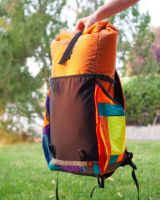 |
Pack: Red Paw Packs Front Range | 19.2 oz |
 |
Pack Liner: Trash Bag Liner | 0.5 oz |
| Sleep System | ||
 |
Sleeping Bag: Katabatic Palisade | 18.4 oz |
 |
Sleeping Pad: NeoAir Xlite | 12.5 oz |
 |
Pillow: Big Sky Dream Sleeper | 2 oz |
| Kitchen | ||
 |
Stove: BRS 3000T | 1 oz |
 |
Pot: Toaks 750 Titanium | 3.6 oz |
 |
Spork: Light My Fire Spork | 1.1 oz |
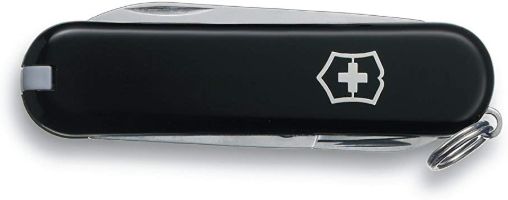 |
Knife: Victorinox Classic SD | 0.7 oz |
 |
Lighter: Bic Mini | 0.5 oz |
 |
Towel: Nano Packtowl | 0.4 oz |
| Water Storage | ||
 |
Water Filter: Sawyer Squeeze | 3 oz |
 |
Water Container: Life Water (x2) | 2.4 oz |
| Packed Clothing | ||
 |
Rain Jacket: Montbell Versalite | 6.4 oz |
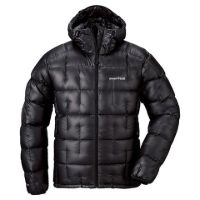 |
Down Jacket: Montbell Plasma | 4.8 oz |
 |
Sleeping Top: Senchi Designs Alpha Hoodie | 3.1 oz |
 |
Sleeping Bottom: Montbell Zeoline Lightweight | 4.4 oz |
 |
Camp Socks: Darn Tough | 2.3 oz |
 |
Camp Shoes: Crocs | 10.6 oz |
| Electronics | ||
 |
Phone: iPhone 12 Mini | 4.8 oz |
 |
Charger: USB cable | 0.6 oz |
 |
Wall Port: Choetech 2 Port Quick Charge | 4.2 oz |
 |
Battery: Anker 10,000 mAh | 6.3 oz |
 |
Headphones: Shure SE215 | 1.1 oz |
| Extras | ||
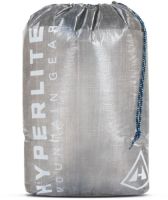 |
Stuff Sacks: Hyperlite Mountain Gear DCF | 0.8 oz |
 |
Plastic Bags: Ziploc | 0.2 oz |
 |
Wallet: Nemo | 0.8 oz |
 |
Headlamp: Nitecore NU25 | 1 oz |
 |
Ear Plugs: foam | 0.1 oz |
| Toiletries | ||
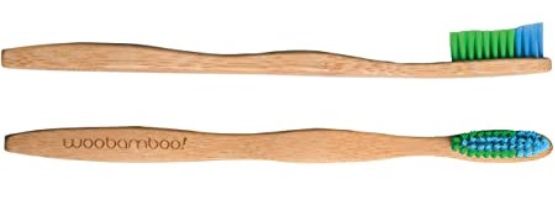 |
Toothbrush: Bamboo (cut) | 0.6 oz |
 |
Toothpaste: Sensodyne | 2.6 oz |
 |
Bug Spray: Natrapel | 3.4 oz |
 |
Sunscreen/ Chafing: Joshua Tree | 0.4 oz |
 |
Toilet Paper: Any | 0.1 oz |
 |
Hand Sanitizer: Dr. Bronners | 2 oz |
| First Aid Kit | ||
 |
Pain Reliever: Ibuprofen | 0 oz |
 |
AntiDiarrhea: Imodium | 0 oz |
 |
Wound Cleaning: Alcohol Wipes | 0.1 oz |
 |
Blister Prevention/ Bandage: Leukotape | 0.2 oz |
| Worn Clothing | ||
 |
Headwear: Ball Cap | 0.6 oz |
 |
Hiking Top: Montbell Cool Hoodie | 6.6 oz |
 |
Hiking Bottom: R-Gear 5 pocket | 6.3 oz |
 |
Underwear: 2UNDR Night Shift | 4 oz |
| Footwear | ||
 |
Shoes: Altra Lone Peak 3.5 | 20.8 oz |
 |
Socks: Darn Tough | 2.3 oz |
 |
Gaiters: Dirty Girl | 1.5 oz |
| Consumables | ||
 |
Food: Assorted | 81.6 oz |
 |
Water: Life/Smart Water | 17.6 oz |
 |
Stove Fuel: MSR (small) | 3.9 oz |
| Accessories | ||
 |
Trekking Pole: Gossamer Gear LT5 | 4.9 oz |
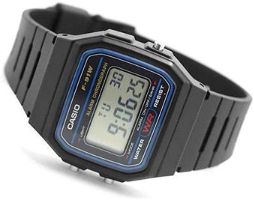 |
Watch: Casio F91W-1 | 0.8 oz |
⛺️ Shelter
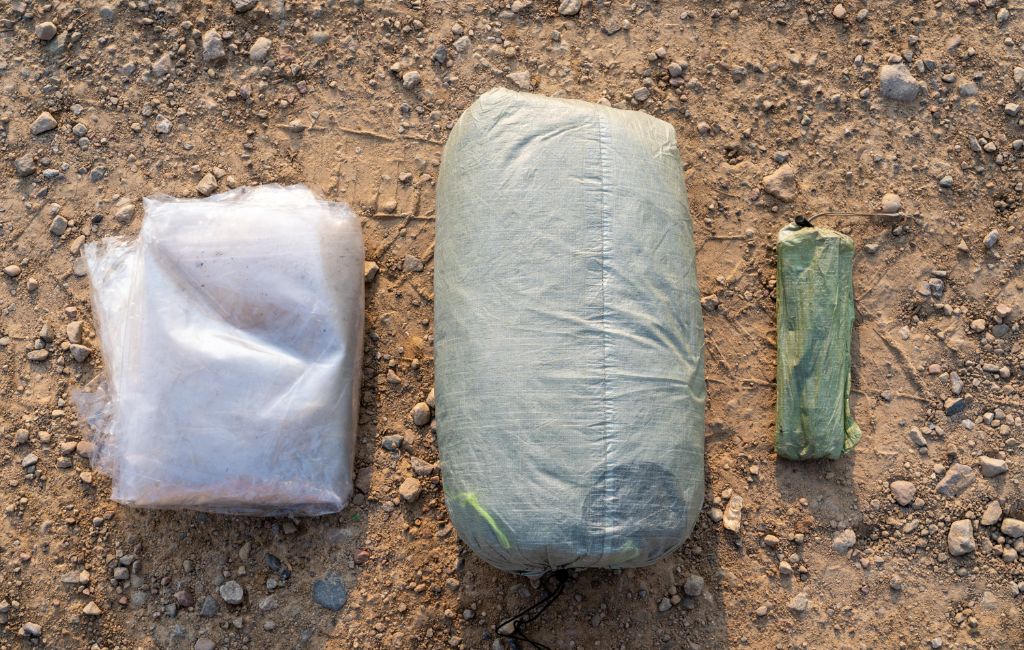
From left to right: footprint, tent, stakes
Shelter is often the first thing people think about when they think about backpacking. Your shelter is part of your “big three” - shelter, pack, and sleep system. These are the heaviest items and often the first items targeted when trying to go ultralight.
Shelters include a tent, tarp, hammock, or bivy. If you want to get your shelter system even lighter, go for a non-freestanding tent. These tents rely on your trekking poles for their support.
Additionally, some hikers choose to carry a footprint to protect the bottom of their tent from abrasion in rockier areas and protect in wet conditions.
A thin plastic drop cloth is cheap, light, and surprisingly durable. I’ve been using the same piece of plastic for 100+ nights!
Recommended:
- Zpacks Hexamid (11.9 oz): Made with super light and durable Dyneema fabric and a generous 47” peak height the this tent is worth getting a little spendy on. Note this is a non-freestanding and requires trekking poles to set up. The listed weight includes 8 titanium stakes.
- Big Agnes Fly Creek HV UL1 (27.0 oz): Ligthweight and durable tent for those that prefer the stability of a freestanding tent.
- Tyvek or 2mm painter’s drop cloth (1.0 oz): A piece of either of these will work well as a footprint.
Pack

Pack and Liner
Packs come in many shapes, sizes and capacities. As one of your big three items, aim for two pounds (or less!) for weight. Ultralight packs generally have a simple design, keeping the feature list, and therefore the weight, to a minimum.
Aim for 36 to 60 liter of capacity. You’ll need more capacity for longer trips or if you need to carry additional items like a bear canister.
Many ultralight packs are frameless. If you go this route make sure not to exceed the maximum recommended weight otherwise it will become uncomfortable to carry.
Speaking of comfort, choose a pack that is the correct torso length, is breathable, and has a cushioned back panel.
Adding a pack liner like a thin trash compactor bag keeps your gear dry.
Recommended:
- Red Paw Packs Front Range 40L (10.4 oz)
- Gossamer Gear Murmur (12.5 oz): This pack keeps the design simple and weight low (36L capacity). The removable back panel doubles as a seat pad, a nice bonus.
- SWD Long Haul (32.5 oz): If you need more space or prefer an internal frame, the SWD Long Haul has a generous 60 liters of capacity.
- Trash compactor bag (0.5 oz): A trash compactor bag is an inexpensive, easily replaceable option for keeping moisture out of your pack.
Sleep System

Your sleep system makes up the last of your big three. Sleeping bags come as either traditional bags or quilts. Quilts work like a quilt on your bed laying over the top of you. They don’t go all the way around you like a traditional sleeping bag. This saves both weight and space.
For fill, down feathers are lighter and more compact than synthetic fill, but more expensive. A higher temperature rating will be lighter but less versatile. For me, a 30-degree bag is a sweet spot between weight and warmth for most three-season conditions.
When choosing a sleeping pad, focus on both comfort and insulation. Inflatable pads provide the most comfort but are prone to punctures. Foam pads are foolproof but bulky to carry. Insulation is measured in R-value. The higher the R-Value the more insulation the pad provides. For three-season backpacking, target an R-Value between 2.0 and 4.0.
A pillow can be a specialized item or simply some clothes stuffed into a stuff sack.
Recommended:
- Katabatic Palisade (18.4 oz)
- Enlightened Equipment Revelation 30F (16.9 oz): A great price for the featherlight weight, the Revelation is a stalwart in the ultralight community.
- NeoAir XLite (12.5 oz): The NeoAir is a go-to ultralight inflatable sleeping pad with great comfort and R-value.
- Big Sky Dream Sleeper (2 oz)
- Hyperlite Stuff Sack Pillow (1.2 oz): One of my personal favorites. Works as a stuff sack by day and a fleece-lined pillow at night.
Kitchen

Your camp kitchen is customizable depending on the type of food you like to eat on the trail. If you enjoy spending time cooking at camp it may take up more weight. If you’re trying to shave weight you might opt to go stoveless (or you could order a bunch of these meals :) ).
The best stove is a simple canister stove. These stoves are light, provide a stable cooking surface and boil water quickly. They are easy to attach and use with any pot. Alcohol stoves have been a popular ultralight DIY stove for years. However, due to increasing wildfire danger in the west, they are often banned during peak season. Best to steer clear.
For a pot and a spork look for lightweight materials like titanium. A larger knife is only needed if you plan on doing a lot of chopping or slicing. If not, skip this and use the small knife on your multitool.
Recommended:
- BRS 3000T (1 oz)
- SnowPeak GigaPower (4.2 oz): The GigaPower is a durable stove designed to pack down small and provide superior stability for your pot.
- Toaks Titanium 750 ml (3.9 oz): A favorite functional pot, Toaks Titanium’s shape and handles allow it to double as a pot and a mug.
- Light My Fire Spork (1.1 oz)
- Sea to Summit Spork (0.5 oz): Hard to top the functionally, weight, and durability of this classic spork design.
- Victorinox Classic SD (0.7 oz)
- Knife/Multitool Leatherman CS (1.4 oz): The small knife on the Leatherman CS works well for basic slicing.
- Bic Mini (0.5 oz): Easy to use even when wet and found nearly everywhere this is an essential item to pack for cooking and as an emergency fire starter.
- Nano Packtowl (0.4 oz): Pro tip: Cut the Nano Packtowl in half to make a 5” by 7” dishcloth.
Water Filtration and Storage
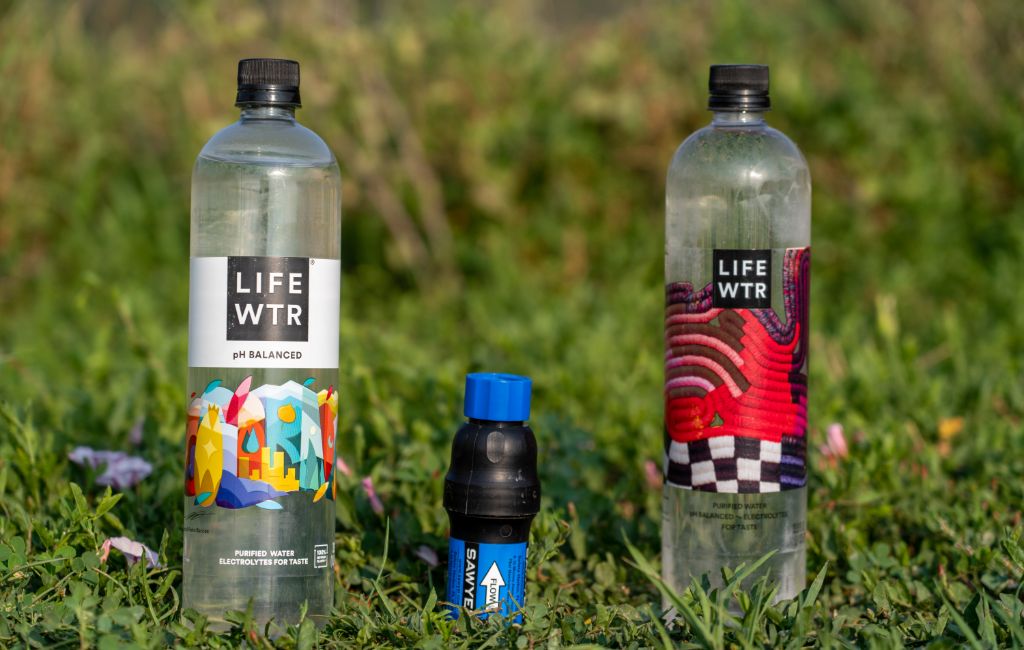
In the backcountry, it’s imperative that you can filter water along the trail. A good water filter will be easy to use, clean, and have a fast flow when filtering. It’s also best practice to have a backup method of purification in case your filter breaks. This can be boiling over your stove or carrying a few purification tabs, like Aquatabs, for emergencies.
It’s important to have enough water storage in case water is scarce or you need to make a dry camp. It also is nice at camp to limit the number of trips back and forth to your water source. A collapsible bladder is light and packs down small when not in use. For drinking on the trail, leave your bulky Nalgene at home, a lightweight plastic water bottle will do.
Recommended:
- Sawyer Squeeze (3 oz)
- BeFree Katadyn 1 Liter (2.3 oz): The Katadyn BeFree works fast and doubles as a way to carry an extra liter of water if needed.
- Life Water Bottle x2 (2.4 oz)
- Smartwater Bottle 1 Liter (1.2 oz): Smartwater Bottles are ubiquitous in the ultra community. Their slim design fits easily in the side pocket of any pack.
- Platypus 2 Liter (1.3 oz): The Platypus bladder folds down to practically nothing and is great to have when you need extra water storage.
Packed Clothing

When making the transition to ultralight, group your clothes into two categories: Hiking and Packed. Packed clothing, aka camp clothes, are the clothes that stay in your pack while you hike. The idea behind the ultralight clothing strategy is your warmer packed layers stay dry for use at camp or while sleeping and only your hiking clothes are worn out in the elements.
Weather can change quickly on the trail. Always having dry layers to change into is important. If you don’t it can lead to hypothermia. The exception to this rule is your rain gear. Rain gear is considered packed gear because you normally don’t hike in it. However, if it’s raining or windy by all means hike in it!
It’s also a good rule to pack only synthetic or wool materials. No cotton. Cotton takes a long time to dry and doesn’t keep you warm when wet as wool does.
Recommended:
- Montbell Versalite (6.4 oz)
- Rain Jacket Outdoor Research Helium ll (6.4 oz): Ultralight with excellent ability to repel water and wind.
- Montbell Plasma (4.8 oz): One of the lightest down jackets available, cut to fit under other layers.
- Senchi Designs Alpha Hoodie (3.1 oz)
- Icebreaker Lightweight Wool (5.3 oz): The Icebreaker lightweight top is great for sleeping and for chilly nights at camp.
- Montbell Zeoline Lightweight (4.4 oz)
- Minus 33 Lightweight Wool (6.0 oz): Comfortable 100% merino wool bottoms.
- Starter Athletic Briefs (2.5 oz): After hiking all day it’s nice to have a dry pair of underwear to change into.
- Darn Tough Quarter Hiker (2.3 oz): Not only are they super comfy, but Darn Tough’s lifetime warranty is also the real deal.
- Crocs Sandals (10.6 oz)
- Xero Shoes Genesis Sandals (6.0 oz): Extra shoes can be optional depending on how much time you have at camp. If you pack camp shoes, the Xero Shoes are light and can be hiked in if needed.
Electronics

The main item here is your phone. Your phone is the new multitool. It serves as a GPS, map set, camera, backup headlamp, a source of entertainment, and more. It even works as a phone if you have service! On a shorter trip, you might be able to get away with one charge. On a longer trip or if you are a heavy phone user packing an extra battery is critical. This is especially true if your phone is your only source of maps.
Cold weather can drain a phone’s battery faster than normal, always make sure to pack enough juice. Don’t forget to bring a charging cable and a set of headphones too. If your trail passes through a campground with power, bring a USB Wall Adaptor. Never turn down the chance for free power!
Recommended:
- iPhone 12 Mini (4.8 oz): All the benefits of the latest iPhone in a small package and game-changing camera with night mode.
- iPhone Lightning to USB (0.6 oz): Bring the USB version of the lightning cable, it’s more standard on external batteries and in trail towns.
- Choetech 2 port quick charge (4.2 oz)
- USB Wall Adaptor (0.7 oz): Standard USB wall Aadaptor.
- Battery Anker Portable Charger (6.3 oz): The small compact Anker will do about 1.5 charges (larger options available).
- Shure SE215 (1.1 oz)
- Yurbuds (1.2 oz): The Yurbuds are designed for workouts, ideal for use in the tent or on the trail.
Extras

Here are a few items that don’t fit neatly into our other categories.
Stuff sacks are used to keep your equipment dry. They are great for organizing your food, camp kitchen, and clothes. They are also good if your sleeping bag or inflatable mattress doesn’t come in a waterproof stuff sack.
Gallon ziplock bags work well for organizing gear but are less durable over the course of a long trip. I generally use them for storing gear that is ok if it gets slightly damp. Create a simple hiker wallet in a small ziplock that includes ID, credit card, and some cash.
A separate headlamp keeps your hands free around camp and saves precious phone batteries. Make sure to test the batteries before hitting the trail. Nothing is worse than getting to camp to find dead batteries in your headlamp.
Earplugs block out snoring hikers, loud weather, and noisy woods.
Recommended:
- Hyperlite Mountain Gear DCF (0.8 oz)
- Granite Gear 16L x 2 (2.0 oz): Durable, waterproof stuff sacks.
- Sandwich ziploc and Gallon ziploc (0.2 oz): Snap lock closures work better than slide locking which is prone to failing.
- Nemo Wallet (0.8 oz)
- Wallet License, Credit Card, $50 cash (0.4 oz): Store these items in a small ziplock bag.
- Nitecore NU25 (1 oz)
- Petzl E+Lite (1.0 oz): Ultralight and ultra-bright, the Petzl E+Lite lasts for up to 95 hours.
- Ear Plugs Foam (0.1 oz)
Toiletries

This category is largely up to you. The items you bring will be tailored to the trail you are hiking.
If you’re in the desert you might bring more sunscreen and skip the bug spray. If you’re in a temperate rainforest you might do the opposite.
Some hikers take soap, some don’t. If you bring soap make sure it is biodegradable and you follow Leave No Trace principles when using it. Follow LNT principles for how you dispose of your biodegradable toilet paper as well.
For hikers who get periods, packing a Diva Cup is a convenient, lightweight, no waste alternative to tampons or pads.
Recommended:
- Woobamboo Toothbrush (0.6 oz): Saw the handle in half, drill holes in it. Do what you need to do to save the grams.
- Sensodyne Toothpaste (2.6 oz)
- Natrapel bug spray (3.4 oz)
- 100% DEET Mini (0.5 oz): 100% DEET works well or there are non-toxic options available too.
- Joshua Tree Stick (0.4 oz)
- CeraVe SunStick (0.5 oz): Stick sunscreen is less messy than cream and easy to apply.
- Biodegradable Toilet Paper (0.1 oz)
- Dr. Bronners Hand Sanitizer (2 oz)
First Aid Kit

Please don’t skimp on a first aid kit. Pack what you need and what makes you comfortable, both mentally and physically. There is a lot of room for flexibility here. If you have known medical issues, like allergies or a bum knee, don’t leave out items that will make your trip more comfortable or save your life.
Bringing a small multitool helps cut tape and bandages to fit your wound. And having the tweezers is nice for splinters or the stinger of a bee.
Our list below is a bare minimum, make sure to read our full article on how to construct a lightweight and versatile first aid kit.
Personally, when I make my first aid kit I don’t pay too much attention to the weight. I’d rather have peace of mind than save a few grams.
Recommended:
- 4 Ibuprofen Pills (0.0 oz): I like to take enough to have approx one dose per day.
- 4 Imodium Pills (0.0 oz): When you need it, you don’t want to be without it.
- Wound Cleaning 2 Antiseptic Wipes (0.1 oz): Sterilizes and cleans wounds.
- Blister Prevention/ Bandage Leukotape - 12" strip (0.2 oz): Magical tape for blisters, wounds, and securing injuries.
- Knife/Multitool Leatherman CS (1.4 oz): I love having the small scissors and tweezers for first aid, it even has a small knife.
Worn Clothing

This is the clothing you will wear during the day when hiking. For three-season hiking keep it light and breezy. Synthetic materials are preferred as they dry off quickly after a long day of sweating. Wool is also good. Don’t bring cotton, it dries slowly and won’t keep you warm if wet.
Buffs are an awesome multi-purpose piece of gear that can be used to protect your head from the sun or to keep you warm.
If you’re hiking in open sunny terrain, consider bringing a wide-brimmed hat.
Pants vs shorts are largely a matter of personal preference. Pants will keep your legs protected if you’ll be encountering a lot of brushy trails or bushwhacks. Shorts are super breathable on hot hikes.
I prefer a long sleeve top because it means less need for slathering on the sunscreen. The key idea here is to hike in what’s comfortable for you.
Recommended:
- Ball Cap (0.6 oz)
- Half Buff Headwear (0.6 oz): Light and versatile, a buff can be used morning, day, and night.
- Montbell Cool Hoodie (6.6 oz)
- Columbia Long Shirt (7.2 oz): An inexpensive lightweight top that dries quickly.
- R-Gear 5 pocket (6.3 oz)
- Running Shorts (3.5 oz): In warm weather, lightweight running shorts can’t be beaten.
- 2UNDR Night Shift (4 oz)
- Starter Athletic Briefs (2.5 oz): Starter Athletic briefs are quick-drying underwear with enough coverage to prevent chafing.
Footwear

You’ll be on your feet most of the day, make sure you set off with a comfortable pair of shoes. Trail runners provide a great middle ground between running shoes and hiking boots. They also dry off faster and are more breathable for hot or wet conditions. On longer hikes, especially thru-hikes, your feet will swell. When picking shoes look for a wider toe box to counter this.
Hiking socks come in all thicknesses and heights. Depending on the temperatures you might opt for a shorter or longer height. Wool is amazing at being both cooling on hot days and warming on chilly mornings. It also keeps your feet warm when wet.
Gaiters, prevent debris from getting inside your shoes. On long rocky hikes, it means less stopping to get pebbles out of your shoes.
Recommended:
- Altra Lone Peak (20.8 oz): Altra Lone Peaks are the gold standard for long distance hikers with a wide toe box to allow your feet to breathe.
- Darn Tough Quarter Hiker (2.3 oz): Darn Tough’s comfy wool socks come with a great lifetime warranty.
- Dirty Girl Gaiters (1.5 oz): Dirty Girl gaiters are fast drying and light due to their thin fabric. They come in a myriad of funky designs.
Consumables

The definition of what constitutes a consumable can get murky, especially when trying to outdo a fellow hiker's base weight. The generally agreed on consumable items are food, water, and fuel.
Plan on at least a pound and a half of food per day of nutritious food. You should be able to pack enough calories, fat, and protein in this weight to keep you going on the trail.
If I’m hiking in areas of abundant water, I generally carry about half a liter. In drier climates, you’ll need more. A small 3.5 ounce canister of fuel is enough for a short to medium trip to rehydrate meals and make the morning coffee.
Recommended:
Accessories

Another two popular worn items are trekking poles and a watch. Trekking poles can help alleviate strain on the joints on long days. They also provide balance on slippery surfaces, steep slopes, and river crossings. If you have a non-freestanding tent you’ll need to carry one or two trekking poles to pitch your tent.
Wearing a watch in the backcountry is handy for being able to know the time without having to check your phone. Not checking your phone means less wasted battery. A watch also helps easily and quickly track pace and estimate miles hiked.
Recommended:
- Gossamer Gear LT4S w/ strap. (5.5 oz each): Gossamer Gear’s crazy light poles are strong and competitively priced.
- Casio F91W-1 (0.8 oz): A waterproof digital watch with a backlight makes checking the time easy.
*Potential Items Not Included in List (either luxury or conditional): Bear Protection (canister, spray), Book, Bug Netting, Fire Starter Kit, Ice Axe, Journal, Microspikes, Nailclipper, Navigation (compass, maps), Rain pants, Satellite Messenger, Sleeping Bag Liner, Sock Liners, Trowel, Winter Clothing (gloves, balaclava).
See the complete gear list on Packfire.com.
What's Considered Base Weight?
Base weight is the weight of the gear in your pack that doesn’t change over the course of your trip. It includes items like your tent, sleeping bag, headlamp, etc. It doesn't include consumables like toothpaste, food, or water. Neither does it include anything you wear while hiking.
Base weight doesn’t count consumables, the items that fluctuate depending on the length of your trip. Items like water, food, and fuel. Base weight also doesn’t count your worn and carried items. Items like clothes, shoes, or trekking poles.
The reason we calculate base weight separately is to compare your standard gear from a trip to trip. Base weight shouldn’t change much for an overnight or a week-long trip. This gives us a good metric to use to reduce pack weight.
Want to nerd out with your base weight? Packfire is an online tool that works like a spreadsheet to itemize your hiking gear list.
Some photos in this post were taken by Jonathan Davis (@meowhikes)






 650-Calorie Fuel
650-Calorie Fuel